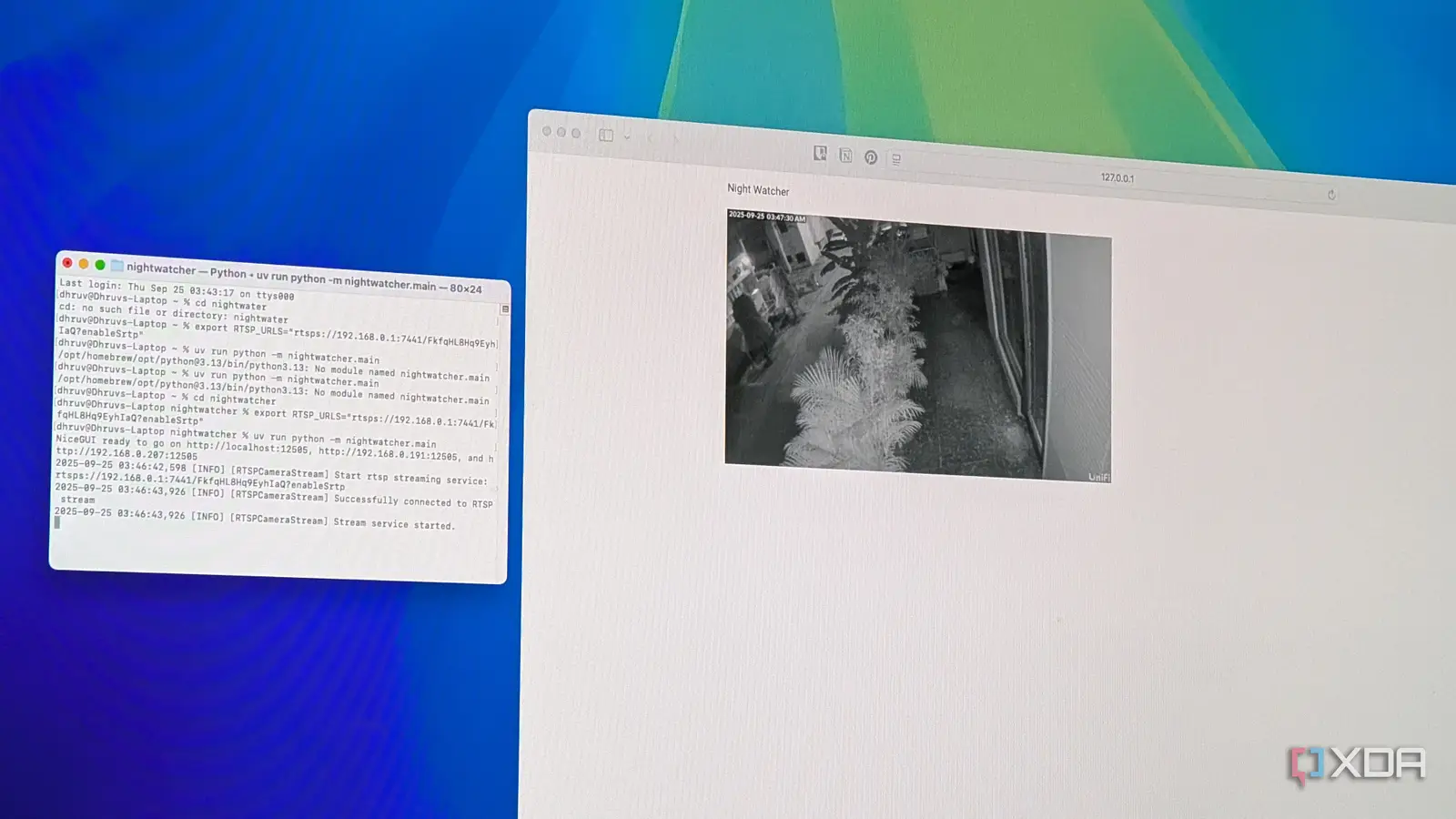
I’ve always loved the idea of a self-hosted surveillance system at home and have tried everything from Synology’s surveillance camera solution to Ubiquiti’s cameras and NVR. Unlike cloud-connected cameras, I like knowing that my cameras and data are entirely under my control, and that I don’t need to pay subscription fees or worry about the provider discontinuing service. Now, the go-to app of choice for almost everyone self-hosting their apps tends to be Frigate. And that’s for a good reason. Frigate’s excellent AI-based motion detection has made it a fantastic option for almost everyone. The problem for me was that Frigate requires a lot of time, effort, and suitable hardware to get right. It is an incredibly powerful piece of software with equally high demands from users. While my NVR handles all my recording needs, I needed an easy-to-access dashboard that would make viewing feeds easy without endless setup. So, with a bit of research, I ended up with Nightwatcher. This small self-hosted app isn’t a Frigate alternative, but a surprisingly practical addition for anyone running their own surveillance systems.
Nightwatcher isn’t as full-featured or heavy-duty as Frigate, but it does what I actually need. It shows me my camera feeds, is easy to configure, and can pull up all my cameras without hours of poking around the documentation. Moreover, ithas given me a surveillance dashboard that runs automatically and is easily accessible to my family without any of the cognitive overload associated with pulling up dedicated apps or tapping through multiple settings just to get my camera feeds. That’s a big win in my books.
Why I gave up on Frigate
Complexity that gets in the way
Look, I know Frigate is designed to be the ultimate open-source NVR with object detection and smart alerts. That sounds great on paper, but in practice, it comes with a steep learning curve. When I first installed it on my NAS, I had to look into hardware acceleration, set up integrations, recording rules, and fine-tune detection zones. Even when I got it running, my server ran hot with a high CPU load. Between researching neural accelerators, external GPUs, and other related topics, it was significantly more effort than I was interested in.
As a tinkerer, I find it interesting. But when it comes to basic home surveillance, this complexity just doesn’t cut it for me. I don’t need a new hobby; I need a functional surveillance system that anyone in my home can access at will. I should be able to open my laptop or phone, tap a link or a bookmark, and quickly view my camera feeds. That’s all I want. That’s when I realized that Frigate wasn’t what I needed at all. My cameras already handled motion detection and alerts at a hardware level, and I had a storage solution already in place. What I needed was a clean viewer that worked with my existing RTSP streams. Nightwatcher was the perfect choice.
Installing and setting up Nightwatcher
An interface anyone can use
Installing Nightwatcher on my server was deceptively easy. I cloned the repository, set environment variables with the RTSP streams for my cameras, and ran the app. That’s it. Head over to the webpage, and your camera feeds should be visible in real-time. There is no complex configuration needed, nor are you dependent on CPU specs or TPU accelerators. The lightweight web app does the trick.
The core feature set is simple, but powerful. Nightwatcher provides a direct view into your camera streams. Just add separators in the initial configuration for as many cameras as you want. The app lays them out as windows, giving you a full dashboard of your security system. Moreover, the app supports both RTSP and RTSPS streams, ensuring that it will work with encrypted streams just fine if your camera supports them. There’s a lot of flexibility here.
If your cameras support hardware object detection, you can tap a single button to enable a detection overlay, but I’ve kept it switched off. Finally, the user interface is extremely straightforward. All you have to do is log in to a browser page. There are no settings to manage, no configuration options, nothing. This makes Nightwatcher a no-brainer for being used by less tech-savvy users.
Finding the right balance between power and simplicity



